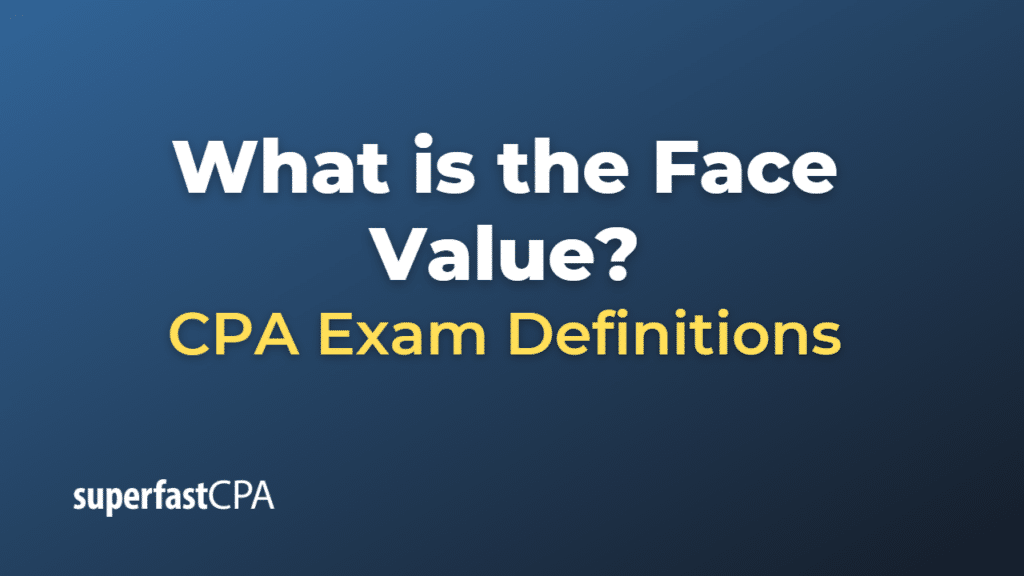Face Value
The term “face value” is often used in finance and investing, and it can have slightly different meanings depending on the context:
- Bonds: In the context of bonds or other debt instruments, the face value (also known as par value) is the amount of money the issuer promises to pay back to the bondholder at the bond’s maturity date. For example, if a company issues a bond with a face value of $1,000, this means that the bondholder will receive $1,000 from the company when the bond matures.
- Stocks: For stocks or shares, the face value (or par value) is a nominal value assigned to the shares at the time of issuance. It’s often a very small amount that doesn’t necessarily reflect the market price of the stock, which can fluctuate based on supply and demand.
- Currency: In the context of currency, the face value is the worth or value of a coin or paper money as printed on the currency itself. For example, a $10 bill has a face value of ten dollars.
- Derivatives: In the context of derivative instruments like futures or options, face value refers to the value of the underlying asset as specified in the contract at the time of entering into the contract.
Remember that the face value is different from the market value, which can change based on a variety of factors such as interest rates, market conditions, or the creditworthiness of the issuer.
Example of the Face Value
Let’s consider an example for each context:
- Bonds: A corporation issues a 10-year bond with a face value of $1,000 and a coupon rate of 5%. This means that the bondholder will receive $1,000 at the end of the 10 years (the bond’s maturity), along with annual interest payments of $50 (5% of $1,000) for each of those 10 years.
- Stocks: A company issues shares of stock with a face value (or par value) of $1 per share. This value is mostly symbolic, as the actual price of the stock on the open market may be much higher or lower, depending on the company’s perceived value, its earnings, and many other factors.
- Currency: A coin that is marked with the number ‘1’ and the word ‘dollar’ has a face value of one dollar. This is the amount that the coin is worth as a medium of exchange.
- Derivatives: Let’s say an investor enters into a futures contract to buy 100 barrels of oil, with each barrel priced at $50 as per the terms of the contract. The face value of this contract would be $5,000 (100 barrels * $50/barrel). This is the amount that the underlying asset (the oil) is worth according to the contract.
Please note that the actual price paid by the bondholder or shareholder may be different from the face value, and the market price of the underlying asset in a derivatives contract can fluctuate. The face value is more of a baseline or reference point.













